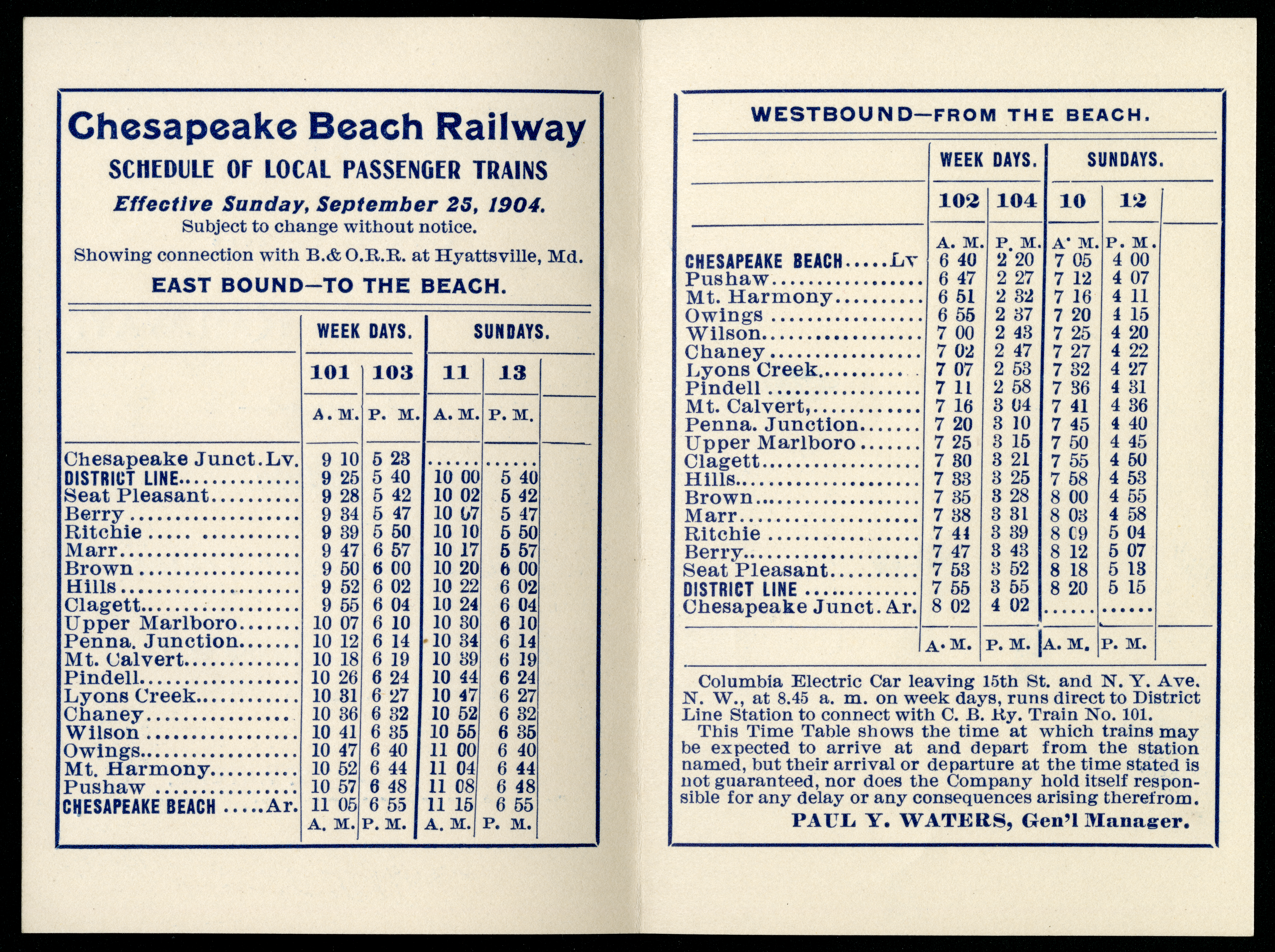When summer hit Washington, D.C. at the turn of the Twentieth Century, it meant the start of one thing--trips on the Chesapeake Beach Railway. The idea to connect the nation’s capitol to the Chesapeake Bay dates back to the early 1890s. Business leaders in Washington, D.C. and Baltimore wanted to build up the area between Fishing Creek and Chesapeake Bay (now known as Chesapeake Beach) as a resort community for middle and upper class city families. The concept didn’t gain traction until the end of the decade, when the Chesapeake Beach Railway Company (helmed by Colorado railroad entrepreneur Otto Mears) took over the project, and construction began on the track and a bridge crossing the Patuxent River in Maryland. The line was completed in 1899, and the resort opened the following year.
Ads for the resort and the railroad ran frequently--sometimes spanning whole pages--in local Washington, D.C. newspapers. The ads featured an illustration of a girl in a bathing suit and a list of the decadent features available in the area, then being promoted as “The New Monte Carlo.” Among the things vacationers could look forward to was a ride on “The Great Derby” roller coaster on the “mammoth boardwalk” that was partially built over the water. There were merry-go-rounds, bowling alleys, dance halls, as well as saltwater crabbing and fishing. Accommodations were high-end, too, with the Belvedere Hotel being lauded as having excellent cuisine and views of the bay. The big attractions, however, were the casinos--as a 1908 beach guide in D.C’s Evening Star slyly described it, Chesapeake Beach was “one of Washington’s favorite excursion points for the man with a little time on his hands.”
The train left DC at a stop known as Chesapeake Junction in Northeast Washington and took about an hour on an express route, or ninety minutes on the local, to reach the beach. Round trip fares began at 50 cents, with half-price for children. Advertisements boasted that the train coaches’ windows and doors were entirely screened for a “clean, cool, and comfortable ride.” (Before the addition of the screens, one passenger remembered that as a boy it was "the dirtiest train that you could conceive of" because it was a short train, meaning cinder from the engine flew into the cars.) Morning and afternoon trains went between the District and the shore (as you can see on the timetable below), with a note that the time was an expectation, not a guarantee--the railroad company did not “hold itself responsible for any delay or any consequences arising therefrom.”
Though the railroad and beach town were a popular destination for Washington, D.C. and Baltimore city dwellers, the fun was relatively short lived. The rise in car ownership cut back on business and exacerbated the railroad’s other financial mismanagement throughout the 1920s and 30s. The railroad ceased operations in spring of 1935.
The digitized timetable is in the Archives' collection, as part of Record United 7181, papers and correspondence from Smithsonian Librarian and Acting Curator of Mammals Frederick William True, 1858-1914.
Related Resources
Oral History Excerpts, The Chesapake Beach Railway Museum
America On The Move, National Musuem for American History
Chesapeake Beach Railway, Chronicling America, the Library of Congress
Produced by the Smithsonian Institution Archives. For copyright questions, please see the Terms of Use.


Leave a Comment